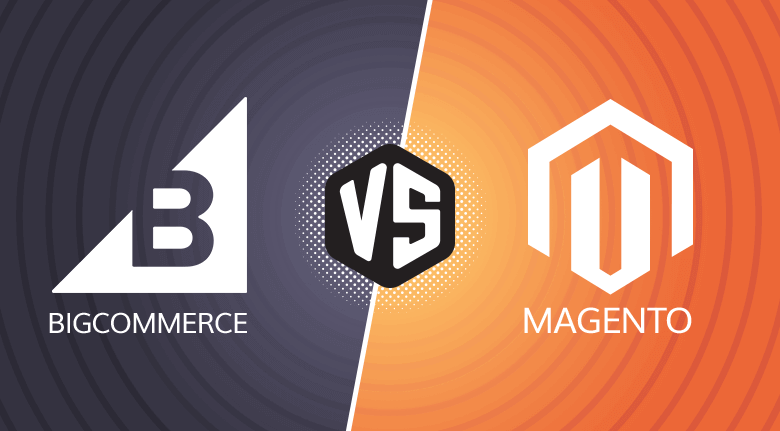Running a successful ecommerce business is not for the faint hearted. You must be master at juggling the hundreds of competing priorities you will face every day. This can be made easier (or much harder), by your choice of ecommerce platform. It doesn’t matter how fabulous or in demand your product is, if your ecommerce platform is not up to the job your business cannot grow effectively or profitably.
Two big players in the ecommerce platform world are BigCommerce and Magento. Both have a reputation for being powerful ecommerce platforms. Both allow you to customize your store and integrate with your existing systems through a range of extensions. So, which is right for you? Let’s dig into some of the key differences between the two platforms.
Magento is an open source platform. Recent updates to Magento have made it work more like a Software as a Service (SaaS) platform. Its cloud offering gives merchants the option of having a single vendor handle for both software and hosting. BigCommerce is already uniquely positioned as an open SaaS platform allowing merchants to achieve customization and integrations that had historically only been possible using an open source platform.
Not sure which one is right for you? Here is a quick breakdown comparing the two platforms with some of their key benefits.
BigCommerce
- Upgrades and patches are automatic, so you always have the latest version.
- There’s no downtime with each upgrade.
- Merchants get immediate access to new features immediately and can control if and when they want to enable a feature.
- BigCommerce includes hosting without any bandwidth caps or limits.
- There are no ongoing maintenance costs.
- The ‘drag-and-drop’ Page Builder is available on all plans.
Magento
- Keeping up with the necessary security patches and version updates is time consuming and labour intensive.
- The more customizations a merchant makes, the harder (and more costly) the Magento store becomes to maintain.
- Costs can vary greatly on Magento.
- The complexity of the Magento platform makes merchants reliant on developer support.
- The learning curve from Magento 1 to Magento 2 is significant, due to new architecture and technologies.
Check out this article to learn more about the different types of ecommerce platform, along with their pros and cons.
Wayne Ainsworth, Ecommerce Manager, from Awesome GTI said, “We’d been on Magento for several years, but there came a point when we realized that the platform wasn’t optimized for what we were trying to do anymore. Plus, we were never sure if the data from that system was 100% correct. We needed a hosted platform that allowed us to focus more on the marketing and selling of products rather than always being tied up with system maintenance. That’s why BigCommerce stood out as a big opportunity for us. We were expanding into B2B markets and fundamentally changing the way we do things online, and BigCommerce helped us accomplish that. It’s helped us get to where we are today.”
Conclusion
In the end, BigCommerce looks to come out on top in this comparison as a SaaS platform built for seamless scalability at an affordable price.
Not convinced? BigCommerce is offering four months free and 10% off migration services for merchants that switch from Magento to BigCommerce. Whether you are forced to re-platform from Magento 1 or just want to explore your options, there is no risk in trying BigCommerce.
For merchants already familiar with Magento that are facing the end of life of Magento V1, now is a crucial time to consider the options that are available on the market. BigCommerce is also offering four months free for Magento users that are looking to migrate.


